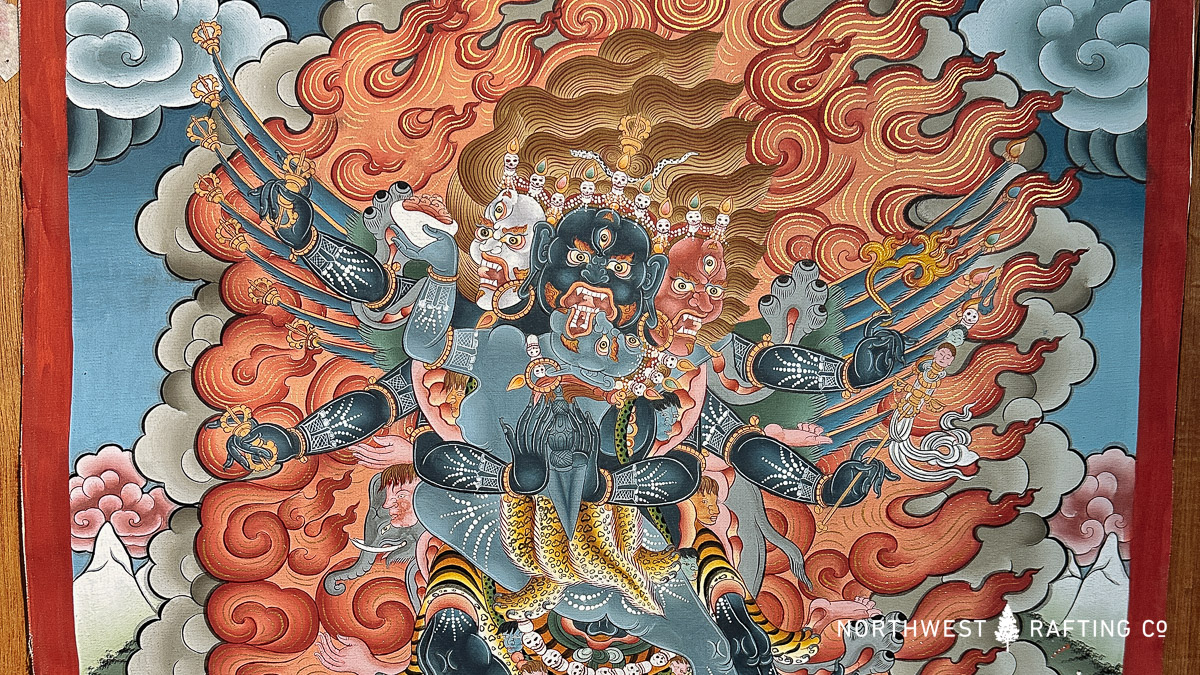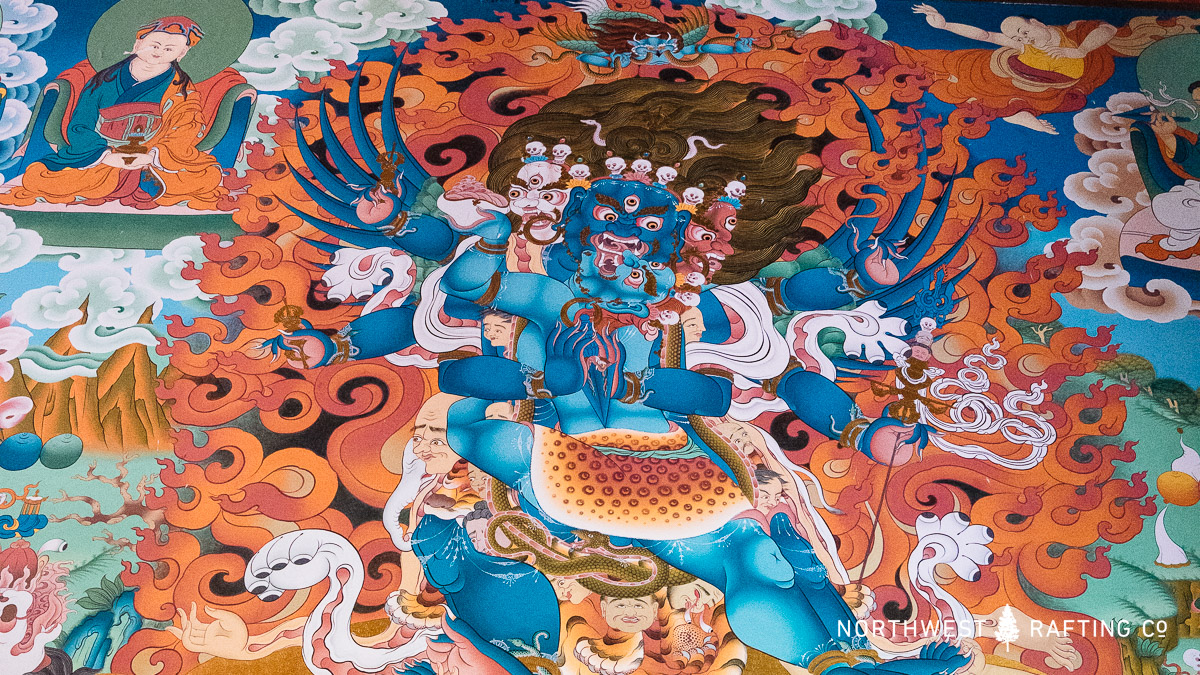When I travel and guide in Bhutan, one figure I encounter again and again in temples and monasteries is Vajrakilaya (in Sanskrit, वज्रकीलाय). His paintings and sculptures are everywhere, and once you know what to look for, you start to recognize him immediately—fierce expression, multiple arms, surrounded by flames, and holding or embodying the ritual dagger known as the phurba.

Vajrakilaya is a wrathful form of Vajrasattva, the deity of purity. While Vajrasattva is peaceful, Vajrakilaya shows compassion in a more forceful way—using power and intensity to clear away obstacles. The phurba dagger doesn’t symbolize violence, but rather the cutting through of ignorance, anger, and jealousy. In practice, it’s about transforming negative energy into clarity and wisdom.
The great teacher Guru Rinpoche who introduced Buddhism to Tibet in the 8th century—relied on Vajrakilaya practices to overcome the many challenges he faced in establishing the Dharma. That’s why Vajrakilaya continues to hold such a central role in Vajrayana Buddhism, especially in the Nyingma school.
The very name Vajrakilaya brings together two powerful symbols: the vajra (in Dzongkha, dorje), which represents indestructibility and ultimate truth, and the kīla (in Dzongkha, phurba), the three-sided dagger that pins down and transforms negativity. Combined, they point to a practice that is both unshakable in its essence and forceful in its ability to cut through obstacles. Vajrakilaya embodies this union—unyielding clarity paired with the fierce compassion needed to transform whatever stands in the way of awakening.

Today, Vajrakilaya ceremonies are still an important part of Buddhist life in Bhutan, Nepal, and Tibet. In Bhutan, entire communities gather for days-long rituals invoking him to clear the way for a good year. On our Bhutan trips, we often see monks performing rituals connected to Vajrakilaya, and we regularly encounter his imagery in temples along our journey.
If you join us on one of our Bhutan trips, you’ll almost certainly see Vajrakilaya depicted in paintings, sculptures, or ritual objects. These encounters add depth to the cultural experience, and they give us a window into how Bhutanese Buddhism continues to thrive and evolve.